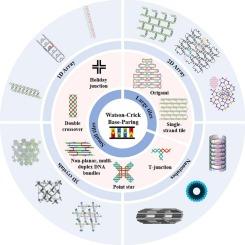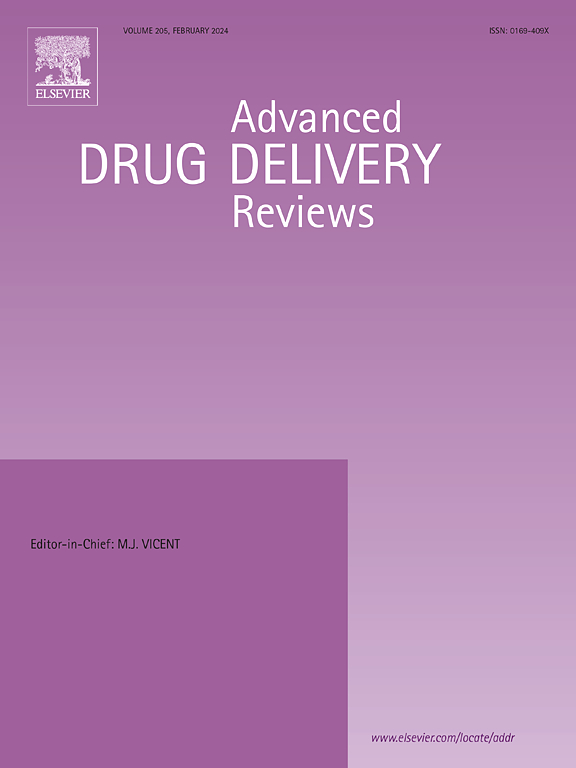Design principles for construction of DNA-based nanostructures
IF 17.6
1区 医学
Q1 PHARMACOLOGY & PHARMACY
引用次数: 0
Abstract
DNA nanotechnology, a cutting-edge field that constructs sophisticated DNA-based nanostructures by harnessing the unparalleled programmability of DNA, has evolved into a powerful tool for applications in therapy, biosensing, logic computation, and more. This review outlines the fundamental strategies for constructing DNA nanostructures, beginning with the design of basic building blocks such as small, symmetric tiles (e.g., DX and TX tiles, point star motifs, T-junctions), and extending to more complex, addressable scaffolds like DNA origami and single-stranded tile (SST) structures. Furthermore, it surveys extended arrays (1D/2D arrays, nanotubes, 3D crystals) formed through motif association, while introducing the computational potential of algorithmic self-assembly and the properties of DNA-based aggregates (hydrogels, liquid–liquid phase separation systems). The design and construction logic of DNA nanostructures, spanning from static to dynamic systems and from microscopic to macroscopic scales, is also elucidated.


构建基于dna的纳米结构的设计原则
DNA纳米技术是一个前沿领域,通过利用DNA无与伦比的可编程性来构建复杂的基于DNA的纳米结构,已经发展成为治疗,生物传感,逻辑计算等应用的强大工具。这篇综述概述了构建DNA纳米结构的基本策略,从基本构建块的设计开始,如小的,对称的瓷砖(例如,DX和TX瓷砖,点星图案,t结),并扩展到更复杂的,可寻址的支架,如DNA折纸和单链瓷砖(SST)结构。此外,它还研究了通过基序关联形成的扩展阵列(1D/2D阵列,纳米管,3D晶体),同时介绍了算法自组装的计算潜力和基于dna的聚集体(水凝胶,液-液相分离系统)的性质。本文还阐述了DNA纳米结构的设计和构建逻辑,从静态到动态系统,从微观到宏观尺度。
本文章由计算机程序翻译,如有差异,请以英文原文为准。
求助全文
约1分钟内获得全文
求助全文
来源期刊
CiteScore
28.10
自引率
5.00%
发文量
294
审稿时长
15.1 weeks
期刊介绍:
The aim of the Journal is to provide a forum for the critical analysis of advanced drug and gene delivery systems and their applications in human and veterinary medicine. The Journal has a broad scope, covering the key issues for effective drug and gene delivery, from administration to site-specific delivery.
In general, the Journal publishes review articles in a Theme Issue format. Each Theme Issue provides a comprehensive and critical examination of current and emerging research on the design and development of advanced drug and gene delivery systems and their application to experimental and clinical therapeutics. The goal is to illustrate the pivotal role of a multidisciplinary approach to modern drug delivery, encompassing the application of sound biological and physicochemical principles to the engineering of drug delivery systems to meet the therapeutic need at hand. Importantly the Editorial Team of ADDR asks that the authors effectively window the extensive volume of literature, pick the important contributions and explain their importance, produce a forward looking identification of the challenges facing the field and produce a Conclusions section with expert recommendations to address the issues.

 求助内容:
求助内容: 应助结果提醒方式:
应助结果提醒方式:


